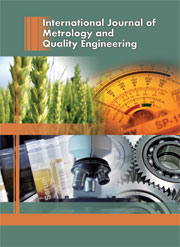No CrossRef data available.
Article contents
Visual tolerance analysis for engineering optimization
Published online by Cambridge University Press: 06 March 2014
Abstract
Classic methodologies of DOE are widely applied in design, manufacture, quality management and related fields. The resulting data can be analysed with linear modeling methods such as multiple regression which generates a set of equations, Y = F(X), that enable us to understand how varying the mean of one or more inputs changes the mean of one of more responses. To develop, scale-up and transfer robust processes to manufacturing we also need to set the control tolerances of each critical X and understand the extent to which variation in the critical X’s propagate through to variation in the Y’s and how this may impact performance relative to requirements (or specifications). Visual tolerance analysis provides a simple way to understand and reduce propagation of variation from X’s to Y’s using models developed from DOE’s or historical data. This paper briefly introduces the concept of tolerance analysis and extents this to visual tolerance analysis through defect profiles and defect parametric profiles. With the help of visual tolerance analysis, engineering and statistical analysts can work together to find the key factors responsible for propagating undesired variation into responses and how to reduce these effects to deliver a robust and cost effective process. A case study approach is used to aid explanation and understanding.
Keywords
- Type
- Research Article
- Information
- International Journal of Metrology and Quality Engineering , Volume 4 , Issue 3 , 2013 , pp. 153 - 162
- Copyright
- © EDP Sciences 2014




